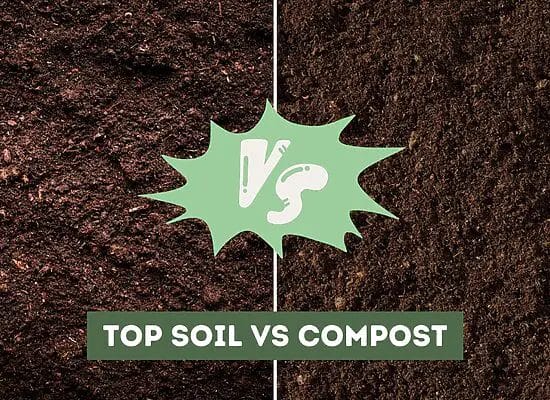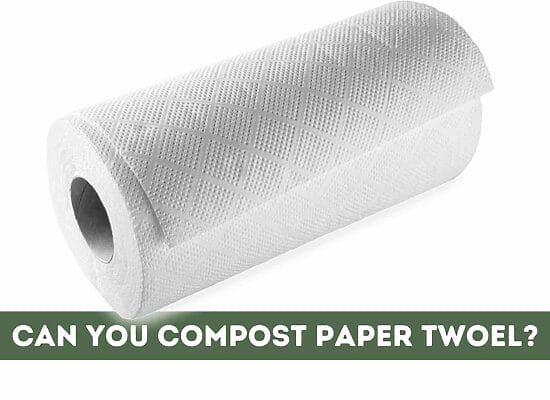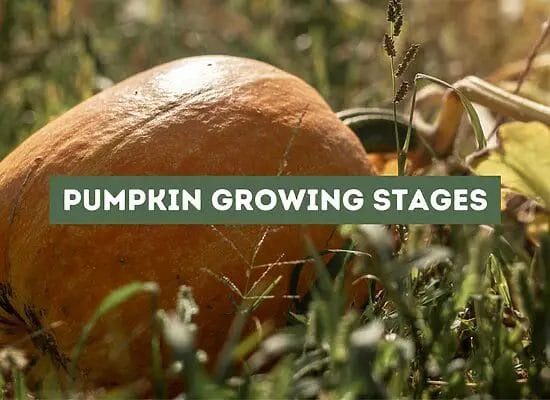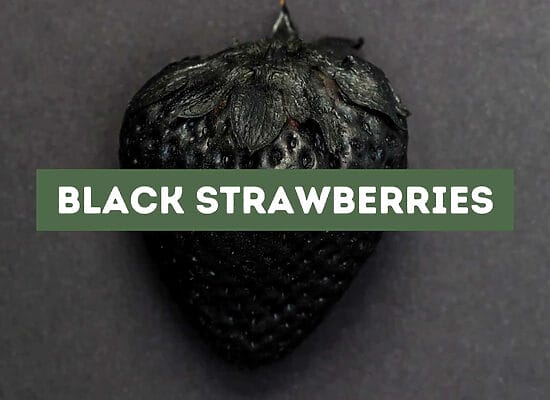
Growing asparagus from cuttings is a great way to propagate new asparagus plants. It is a simple and natural method that requires only a few steps. Before you start, it is important to note that you should use cuttings from a fresh asparagus plant, not from the fridge or freezer. Below we’ll guide you through the process of growing asparagus from cuttings using the soil method.
Key takeaways:
- Asparagus Plant Basics: Asparagus is a perennial vegetable in the lily family, with separate male and female plants. It grows best in well-drained soil with a pH of 6.0 to 6.5 and requires full sun exposure in temperatures between 60°F and 85°F.
- Soil Preparation: Prepare the soil bed by removing weeds, creating a 12-inch deep trench, and adding compost or a soil mix containing topsoil and organic materials.
- Planting Asparagus Cuttings: Space healthy, disease-free cuttings from a 1-year-old plant about 18 inches apart in rows 4 feet apart. Cover cuttings with 2 inches of soil and water thoroughly.
- Propagating Asparagus from Cuttings: Propagation involves taking a 12-inch stem cutting from a healthy asparagus plant, preparing it by removing leaves, and using rooting hormone powder. Plant the cutting in well-draining soil, maintain warmth, moisture, and good ventilation for successful growth.
- Caring for Asparagus: Asparagus prefers temperatures between 60-75°F and needs regular watering, deep about 1-2 inches weekly. Allow foliage to develop into ferns after harvesting. Fertilize with balanced fertilizer, compost, or manure.
- Harvesting Asparagus: Start harvesting spears in the second year when soil temperature reaches around 50°F. Cut spears just below the soil surface, stop when they become thinner than a pencil, and let remaining spears grow into ferns for energy storage.
- Dealing with Issues: Watch out for pests like asparagus beetles, slugs, and diseases like rust. Monitor, use insecticidal soap, neem oil, or fungicides as needed. Proper conditions and nutrition encourage growth and address poor crop yield. Proper spacing, soil, and feeding are crucial.
Understanding Asparagus Plant
If you’re planning to grow asparagus from cuttings, it’s essential to understand the plant itself. Asparagus is a perennial vegetable that belongs to the lily family. It’s a hardy plant that can grow up to 5 feet tall and has feathery foliage. Asparagus plants are dioecious, meaning that they have separate male and female plants. The female plants produce berries, while the male plants produce more spears.
Asparagus plants have a deep root system that can grow up to 6 feet deep. They prefer well-drained soil that is slightly acidic with a pH level of 6.0 to 6.5. The ideal temperature for growing asparagus is between 60°F and 85°F. They require full sun exposure to grow properly.
Asparagus plants are usually grown from crowns, but they can also be grown from cuttings. When growing asparagus from cuttings, it’s essential to choose healthy, disease-free cuttings. The cuttings should be at least 1 year old and have a diameter of at least 1/4 inch.
Asparagus plants take time to establish themselves. It can take up to 3 years for the plant to produce its first harvest. However, once established, the plant can be produced for up to 20 years. It’s essential to take good care of the plant during the establishment phase to ensure a healthy harvest in the future.
Preparing for Planting
Before planting asparagus cuttings, it is important to prepare the soil bed. Here are some tips to ensure that your asparagus cuttings will grow successfully:
Soil Preparation
Asparagus grows best in well-draining soil that is rich in organic matter. The ideal soil pH for asparagus is between 6.5 and 7.5. You can test your soil pH using a soil testing kit, which can be purchased at most garden centers.
To prepare the soil for planting, remove any weeds, grass, or roots from the area where you plan to plant your asparagus. Dig a trench that is about 12 inches deep and 6 inches wide. If you have heavy clay soil, consider adding sand or compost to improve drainage.
Compost
Adding compost to your soil can help improve soil structure and provide nutrients for your asparagus plants. You can make your own compost by collecting yard waste and kitchen scraps, or you can purchase compost from a garden center.
When adding compost to your soil, mix it thoroughly with the existing soil. Aim to add about 2 inches of compost to your soil bed.
Soil Mix
If you have poor soil quality, you may want to consider using a soil mix to improve soil structure and provide nutrients for your asparagus plants. A soil mix typically contains a blend of topsoil, compost, and other organic materials.
When using a soil mix, follow the manufacturer’s instructions for proper application. Aim to add about 2 inches of soil mix to your soil bed.
Rows
To plant your asparagus cuttings, you will need to create rows that are about 4 feet apart. This will allow enough space for your asparagus plants to grow and spread out.
Asparagus Bed
Once you have prepared your soil bed, it is time to plant your asparagus cuttings. Place the cuttings in the trench, spacing them about 18 inches apart. Cover the cuttings with about 2 inches of soil, and water the soil thoroughly.
Propagating Asparagus from Cuttings
Growing asparagus from cuttings is a simple and effective way to propagate new plants. This method involves taking a stem cutting from an existing asparagus plant and planting it to grow into a new plant. Here’s how to propagate asparagus from cuttings:
- Choose healthy asparagus cuttings: Select a healthy asparagus plant and take a stem cutting that is about 12 inches (30 cm) long.
- Prepare the cutting: Cut the stem at a 45-degree angle and remove the lower leaves. Dip the cut end of the stem in rooting hormone powder to encourage root growth.
- Plant the cutting: Plant the cutting in well-draining soil, burying about half of the stem. Water the cutting thoroughly and keep the soil moist but not waterlogged.
- Provide the right conditions: Place the cutting in a warm, bright location with indirect sunlight. Keep the soil moist and provide good ventilation to prevent fungal growth.
- Wait for growth: In about 2-3 weeks, the cutting should develop roots and start to grow new shoots. Once the new plant is established, transplant it to a permanent location in your garden.
Pro Tip: To increase your chances of success, take several cuttings and plant them in separate pots. This will increase your chances of getting at least one healthy plant.
Planting Process
To plant asparagus from cuttings, you will need to follow a few simple steps. First, choose a location that receives full sun and has well-draining soil. Asparagus prefers a soil pH between 6.0 and 7.0.
Next, dig a trench that is about 12 inches deep and 18 inches wide. Mix in some compost and a phosphorus amendment to the bottom of the trench. Then, spread the roots of the asparagus cuttings on top of the compost in the trench. Make sure the crowns are facing up, and the roots are spread out.
Cover the roots with about 2 inches of soil, and then water the trench well. As the asparagus grows, continue to gradually fill in the trench with soil until it is level with the surrounding ground.
It is important to note that asparagus is a perennial plant, meaning it will continue to grow year after year. Asparagus can also be grown from seed, but it takes longer to establish and produce a crop. If you choose to grow asparagus from seed, it is recommended to start with one-year-old roots to ensure a successful harvest.
When planting asparagus, it is important to keep in mind that it can take up to three years for the plant to produce a full harvest. However, once established, asparagus can produce a crop for up to 20 years.
Hint: When planting asparagus from cuttings, make sure to space them about 18 inches apart to allow enough room for the plants to grow and spread out.
Caring for Asparagus
Now that you have successfully grown asparagus from cuttings, it is important to know how to care for them to ensure a bountiful harvest. Here are some tips to keep your asparagus healthy and thriving.
Temperature
Asparagus plants prefer cool to moderate temperatures, with the ideal range being between 60-75°F (15-24°C). They are hardy and can tolerate temperatures as low as 20°F (-6°C) and as high as 85°F (29°C). However, if the temperature rises above 85°F, the plants may become stressed and stop producing spears.
Fertilizer
Asparagus plants require a steady supply of nutrients to grow properly. Fertilize your plants with a balanced fertilizer, such as a 10-10-10 or 20-20-20 blend, once in the spring and once in the fall. You can also add compost or well-rotted manure to the soil around the plants to provide additional nutrients.
Watering
Asparagus plants need consistent moisture to grow properly. Water them deeply once a week, providing about 1-2 inches (2.5-5 cm) of water each time. During periods of drought, you may need to water more frequently. Be sure to water at the base of the plant to avoid getting the foliage wet, which can lead to disease.
Ferns
After harvesting your asparagus spears, allow the remaining foliage to grow and develop into ferns. These ferns are important for the health of the plant, as they provide energy for the roots to grow and store nutrients for the next year’s harvest. Do not cut down the ferns until they turn yellow and die back naturally in the fall.
Pro Tip
To keep your asparagus bed weed-free, consider planting a cover crop such as clover or rye between the rows. These plants will compete with weeds for nutrients and space and can also help improve soil health.
Harvesting Asparagus
Once your asparagus plants have matured, you can start harvesting the spears. Typically, you can start harvesting in the second year after planting. In late winter, when the soil temperature reaches around 50°F (10°C), the spears will start to emerge.
To harvest the asparagus, you will need to cut the spears at the base using a sharp knife or a pair of scissors. Make sure to cut them just below the soil surface, being careful not to damage any emerging spears nearby.
It’s important to note that you should stop harvesting the spears once they start to become thinner than a pencil. This is usually around 6-8 weeks after the first spears emerge. Allowing the remaining spears to grow into ferns will help the plant store energy for the next year’s crop.
When harvesting, it’s important to be gentle with the plants to avoid damaging them. Asparagus spears can be quite delicate, and rough handling can cause them to snap or become bruised.
If you have purple passion asparagus, keep in mind that the spears will turn green when cooked. However, they still have a unique flavor and are a great addition to any dish.
Dealing with Potential Issues
Growing asparagus from cuttings is a fantastic way to propagate new plants from your existing crowns. However, like any crop, asparagus is susceptible to potential issues that can arise during the growing season. In this section, we’ll cover some of the common issues that you may encounter when growing asparagus from cuttings and provide tips on how to deal with them.
Pests
Asparagus can be affected by a variety of pests, including asparagus beetles, slugs, and snails. Asparagus beetles can cause significant damage to your plants by feeding on the foliage and laying eggs on the stems. Slugs and snails can also cause damage by feeding on the foliage and leaving behind slime trails.
To deal with pests, it’s important to monitor your plants regularly and take action as soon as you notice any signs of infestation. You can use insecticidal soap or neem oil to control asparagus beetles, and handpicking can be an effective way to get rid of slugs and snails. You can also use copper tape around the base of your plants to deter slugs and snails from climbing up.
Crops
One of the most common issues that you may encounter when growing asparagus from cuttings is poor crop yield. Asparagus can take several years to establish, and during this time, it’s important to provide your plants with the right conditions to encourage growth.
To ensure a good crop yield, it’s important to plant your asparagus cuttings in well-draining soil that is rich in organic matter. You should also make sure that your plants receive plenty of sunlight and water regularly to keep the soil moist. Adding a balanced fertilizer to the soil can also help to encourage growth and improve crop yield.
Another issue that you may encounter when growing asparagus is the development of rust. Rust is a fungal disease that can cause orange or brown spots to appear on the foliage. To prevent rust, it’s important to keep your plants well-ventilated and avoid overcrowding. You can also use a fungicide to control the spread of rust if necessary.
Additional Growing Tips
Now that you know how to grow asparagus from cuttings, it’s time to learn some additional tips to help you grow healthy and delicious asparagus.
Firstly, it’s important to note that asparagus is a perennial plant, meaning it will keep coming back year after year. Therefore, it’s essential to choose a good spot to plant your asparagus that will allow it to grow undisturbed for many years.
When planting your asparagus, make sure to give each plant enough space to grow. Asparagus plants can grow quite large, so it’s recommended to plant them at least 18 inches apart. Additionally, make sure to plant your asparagus in well-draining soil that is rich in organic matter.
Asparagus plants are heavy feeders, so it’s important to fertilize them regularly. A good fertilizer for asparagus is one that is high in nitrogen, such as 10-10-10 or 12-12-12. Apply the fertilizer in the spring before the asparagus begins to grow and then again in the fall after the growing season has ended.
When it comes to watering your asparagus, it’s best to give it a deep watering once a week rather than frequent shallow waterings. Asparagus plants prefer moist soil but can be prone to root rot if the soil is too wet.
Finally, it’s important to keep an eye out for pests and diseases that can affect your asparagus plants. Some common pests that can attack asparagus include asparagus beetles and slugs, while common diseases include rust and fusarium wilt. If you notice any signs of pests or diseases, it’s important to take action quickly to prevent them from spreading.
FAQ: How to Grow Asparagus from Cuttings
What are some companion plants for asparagus?
Asparagus is a great companion plant for tomatoes, parsley, and basil. These plants help to repel pests that can harm asparagus and also provide nutrients that help it grow.
How do you grow asparagus from roots?
To grow asparagus from roots, you need to plant the roots in a hole that is 8-10 inches deep and fill it with a mix of compost and soil. Cover the roots with a few inches of soil and water well. It can take a few weeks for the roots to establish a healthy root system.
Can asparagus be grown in water?
No, asparagus cannot be grown in water. It needs soil to grow properly and cannot survive in a hydroponic system.
What is the difference between asparagus crowns and roots?
Asparagus crowns are the part of the plant that contains the roots and the stem. They are usually sold as dormant plants and are easier to plant than roots. Asparagus roots are just the roots of the plant and need to be planted carefully to ensure that they grow properly.
Is it possible to regrow asparagus from cut stalks?
No, it is not possible to regrow asparagus from cut stalks. Once the stalks have been cut, they will not regrow new stalks.
Can asparagus be grown from store-bought spears?
Yes, asparagus can be grown from store-bought spears. However, it is important to make sure that the spears are fresh and have not been treated with any chemicals that could harm the plant. To grow asparagus from store-bought spears, you need to plant them in a hole that is 8-10 inches deep and fill it with a mix of compost and soil. Cover the spears with a few inches of soil and water well. It can take a few weeks for the spears to establish a healthy root system.












